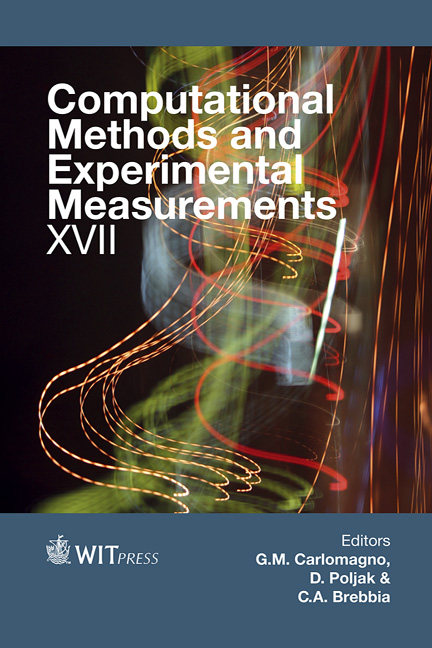Modeling Inside Building Electromagnetic Wave Propagation Using A Finite Difference Time Domain Method
Price
Free (open access)
Transaction
Volume
59
Pages
9
Page Range
135 - 143
Published
2015
Size
1,229 kb
Paper DOI
10.2495/CMEM150121
Copyright
WIT Press
Author(s)
J. Sosa-Pedroza, F. Martínez-Zúñiga, S. Coss-Domínguez
Abstract
Finite Difference Time Domain Method (FDTDM) is a powerful tool to model electromagnetic propagation; once the medium has been defined by its conductivity (σ), permittivity (ε) and permeability (μ), for each position in the computational volume, is possible to “see” the propagation electromagnetic behavior. We have used FDTDM to model waveguides, slot antennas, field effects over different materials and even propagation effects in nanometric spaces. As obstacles produce reflection, refraction and diffraction phenomena, modifying scattering field in free space zones, knowledge of propagation behavior is very useful to define antenna positions and other system characteristics, for WiFi, cellular telephony and other mobile communication systems. We present in this paper, results of EM propagation modeling inside a building, where furniture, structure, walls and any other obstacle has been defined by their EM constants: σ, ε, μ. Modeling shows how EM field is distributed all over the chosen zone, giving an almost exact quantification of field magnitude in each point. Modeling uses Yee algorithm to transform Differential Maxwell Equations into Finite Difference Equations, capable to be handled by the computer program developed by us. The source we used was a 2.4 GHz WiFi access point, allowing us to compare computational results with direct measurements in the experimental area. Each computational point was a 0.6 cm (λ/20) per side cube, over a zone of 9x4x3 m. Results are presented in both, as images showing field distribution in representative areas of analysis zone, and linear graphics comparing acquired computational and measurement data, showing a no more than 3 dB difference between them.
Keywords
finite difference time domain method, propagation in building areas, electromagnetic field propagation





